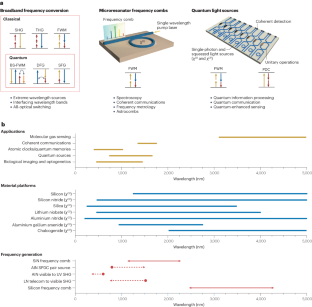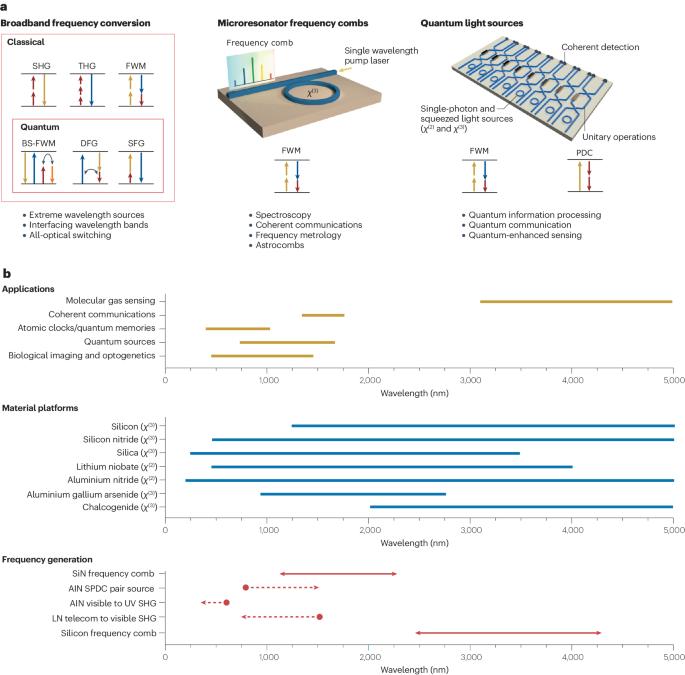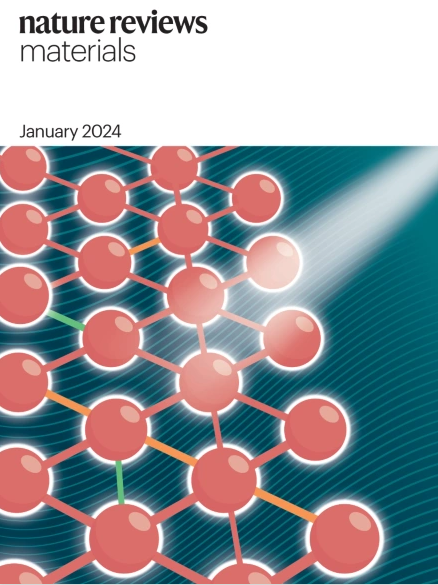Nonlinear and quantum photonics using integrated optical materials
IF 79.8
1区 材料科学
Q1 MATERIALS SCIENCE, MULTIDISCIPLINARY
引用次数: 0
Abstract
Integrated nonlinear photonics provides transformative capabilities for controlling, enhancing and manipulating material nonlinearities in miniaturized on-chip platforms. The extreme reduction of optical mode areas within subwavelength waveguides allows for large enhancements of light–matter interactions resulting in nonlinear phenomena at significantly lower optical powers than their fibre and free-space counterparts. The integration of nonlinear materials into nanophotonics has been instrumental in the practical implementation of emerging applications such as quantum information processing, high-speed optical communications, ultraprecise frequency metrology and spectroscopy. Since the early 2000s, the development of new fabrication methods combined with nanoscale design has led to tremendous improvements in the quality and integration capability of both traditional and new nonlinear material platforms. In this Review, we outline design principles to harness the potential of nonlinear materials on integrated platforms through improvements in waveguide loss, resonator design and dispersion engineering principles. We discuss how these tools have been used towards realizing several of the major goals of integrated nonlinear photonics such as broadband frequency conversion, frequency-comb generation, quantum light sources and nonlinear optical quantum logic gates. Nonlinear optical interactions can be substantially enhanced by the wavelength-scale confinement in integrated photonics, providing transformative capabilities for controlling, enhancing and manipulating material nonlinearities in miniaturized platforms. In this Review, we outline the design principles that harness the potential of nonlinear optical materials on integrated platforms and their utility in applications including broadband frequency conversion, frequency-comb generation, quantum light sources and nonlinear optical quantum logic gates.


使用集成光学材料的非线性和量子光子学
集成非线性光子学为控制、增强和操纵微型化芯片平台中的材料非线性提供了变革性的能力。亚波长波导内光学模式区域的极度缩小,使得光与物质的相互作用大大增强,从而在光功率明显低于光纤和自由空间的情况下产生非线性现象。将非线性材料集成到纳米光子学中,对于量子信息处理、高速光通信、超精密频率计量和光谱学等新兴应用的实际应用至关重要。自 2000 年代初以来,新制造方法的开发与纳米级设计相结合,极大地改善了传统和新型非线性材料平台的质量和集成能力。在本综述中,我们概述了通过改进波导损耗、谐振器设计和色散工程原理,在集成平台上利用非线性材料潜力的设计原则。我们将讨论如何利用这些工具来实现集成非线性光子学的几个主要目标,如宽带频率转换、频率梳生成、量子光源和非线性光量子逻辑门。
本文章由计算机程序翻译,如有差异,请以英文原文为准。
求助全文
约1分钟内获得全文
求助全文
来源期刊

Nature Reviews Materials
Materials Science-Biomaterials
CiteScore
119.40
自引率
0.40%
发文量
107
期刊介绍:
Nature Reviews Materials is an online-only journal that is published weekly. It covers a wide range of scientific disciplines within materials science. The journal includes Reviews, Perspectives, and Comments.
Nature Reviews Materials focuses on various aspects of materials science, including the making, measuring, modelling, and manufacturing of materials. It examines the entire process of materials science, from laboratory discovery to the development of functional devices.
 求助内容:
求助内容: 应助结果提醒方式:
应助结果提醒方式:


